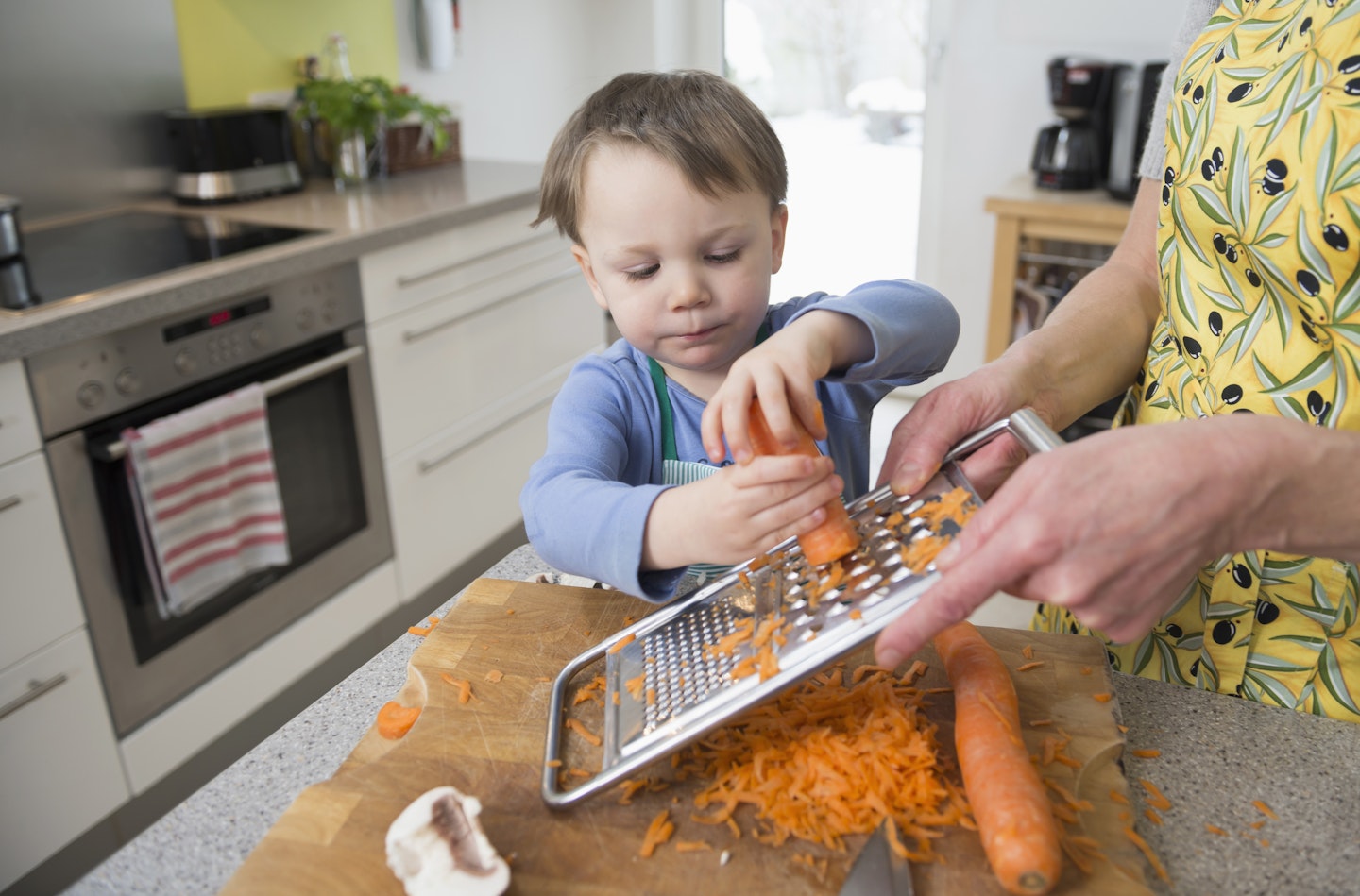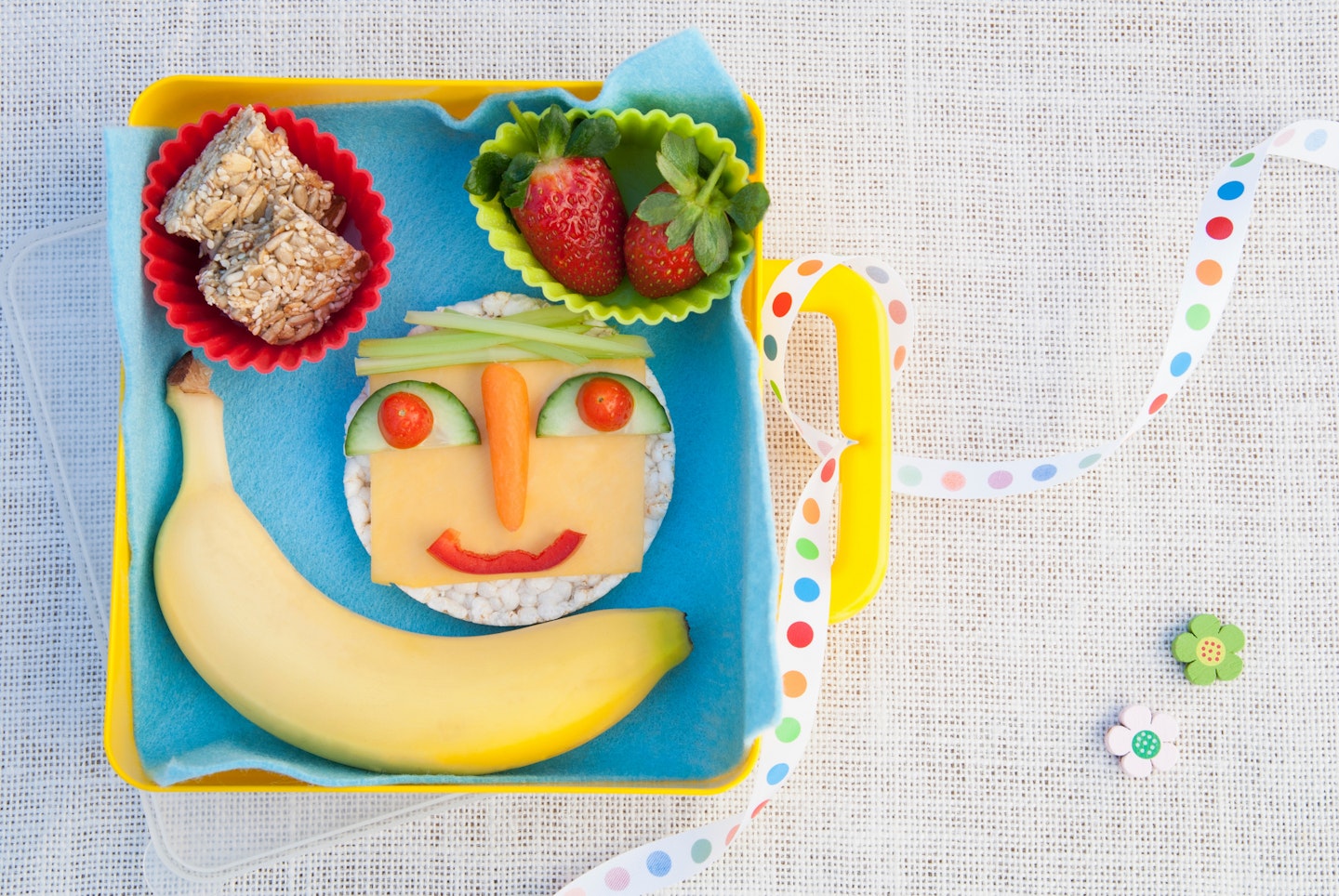Speech, language and feeding expert, Stacey Zimmels shares her top tips to encourage your picky eater to try new foods, become a happy little eater and reduce stress around mealtimes...
If you are the parent of a toddler or small child the chances are that they have phases of being very picky or fussy with their eating. You are not alone! Fussy eating is reported to occur in as many as 50% of young children (although prevalence reports vary).
If you have a fussy eater you may have observed that they only eat a small range of foods, they may have stopped eating foods that they previously ate, that you find yourself cooking them an entirely different meal to the rest of your family or that you have resorted to using bribery, negotiation or distractions to encourage them to eat. Sound familiar? So what can be done to help?
Over the many years that I have worked supporting infant and child feeding I’ve developed my “top hitters”; these are my most successful strategies and ideas to support acceptance of new foods. These tips should help to reduce your stress around mealtimes and will support your child to develop healthier eating habits and to work towards eating new foods.
7 ideas to support your child to eat new foods:
1) No pressure to eat it

We have all found ourselves sitting at the table frustrated to see that yet another meal is going to end up in the bin. It can be really tempting to try and encourage your child to eat “Just one bite” maybe with a reward attached “then you can have a biscuit”?
Phrases such as this put your child under significant pressure to eat and can make the mealtime even more stressful for you as you sit, barter and negotiate until you’re defeated or they eat two tiny bites of broccoli and then get a bowl of ice cream as a reward.
So what can you do instead? My suggestion is to turn it on its head and do the opposite. Don’t say anything! Talk about something else! And if your child says they don’t want to eat something on their plate then respond by saying “That’s fine, you don’t have to eat it”.
“Surely not?” I hear you cry. Well, let me explain how it helps…. It recognises your tiny human as being autonomous and to able to make choices around food based on their appetite, mood, feelings of hunger and genuine fear or dislike of a particular food at a given point in time. Allowing your child this independence helps them to listen to their body and eat mindfully, to eat what they want and as much as they want. This is the foundation for healthy eating habits that last a lifetime.
2) Exposure to a variety of foods
You start weaning and your baby will eat anything. Six months in and they stop liking certain foods, let's say salmon… you offer it a few more times and then you are convinced “yep” they definitely don’t like it any more. So you stop giving it to them. It’s a waste, right? But if they never see a piece of salmon on their plate how will they ever learn to eat it?
This is a very common pattern I see in the families I work with. Over time, as their child becomes more reluctant to eat or try previously accepted foods, the parents stop offering and so the range of foods they eat becomes smaller and smaller. I don’t blame you – why would you stand night after night cooking up chicken curry, roasted veggies, salmon and broccoli only to have it left on the plate and you resorting to throwing some chicken nuggets in the microwave so that they don’t go to bed hungry?
It may be helpful to know that exposing your child to food regularly is key to having them accept and eat those foods. It has been shown that a child may need to see a food between 8-15 times before they begin to eat it, yet that as parents we are likely to give up offering it after 3-4 times of them not eating it. Have a look at my next point for how to go about changing this pattern.
3) “Love it, like it, learning it”

I’ve always used this approach when working with the families I support but have recently stumbled upon this great descriptive phrase for it from @veggiesandvirtue.
When planning and plating up your child’s food always ensure you offer at least one food that your child will definitely eat (love it), a food you know your child may eat (like it) and a food they do not typically eat (learning it) on their plate. This approach ensures exposure to new/non-preferred foods at EVERY MEAL whilst also guaranteeing that they will eat something on their plate (the “love it” food). As a result, there should be no need to make an alternative meal. The “learning it” portions can be slightly smaller so they are less intimidating. Your child can have more of anything as long as it is available.
4) Food preparation/cooking

Have you ever been offered a plate of food at a dinner party that is not familiar to you? What do you do? Give it a good look? You may push it around the plate a little with a fork to get a sense of the texture? Then, before you pop it in your mouth you may give it a little smell? This is normal. We use as many senses as we can when faced with the unfamiliar it is what helps us to know if it is safe.
While engaging with food during food preparation or cooking activities your little one has the opportunity to involve all their senses; to touch, feel, smell and maybe even taste, much like in the example above. It also creates an opportunity for you to have a pressure-free dialogue about the foods in front of you. You can describe their qualities; the colours, textures and listen to the sounds they make when you bite into them. By engaging your children in food-related activities, you continue to expose them to new or unfamiliar foods, which as I have already mentioned is so important. You are also teaching them about foods in all their glory which will make them much more likely to want to eat them.
From simple pre-dinner activities such as chopping up vegetables for a salad to adding spices and stirring a warming hot dish on the stove, involve your child as often as you can in food preparation.
5) Present foods in different ways with different combinations of tastes and flavours

Food needs to look and taste appealing in order for us to want to eat it. Same for our kids! It can be very easy to get into the habit of providing simple plain foods to children but if you want to encourage them to eat then try and make it look, smell and taste good. Simple ideas such as presenting it on their plate as a smiley face; using a dollop of guacamole as a nose with sweet potato mash for the lips, 2 sour cream dollops for eyes and the main serving of chilli as hair.
And on the subject of how food looks…. Don’t be surprised if your child won’t eat a broccoli floret even though you know they like it when they have it chopped and added to other foods as part of one dish. They won’t necessarily recognise that to be broccoli. Serve it as it comes as well as embedded into dishes if you want them to eat it that way.
When cooking, don’t be afraid to use lots of flavours. If you’re making vegetable chips add some paprika, put a squeeze of lemon and black pepper on fish, add butter and mint to peas. If they taste good to you then they will taste good to them.
6) Sauces and dips
This is definitely one of my favourite tips! Use sauces as a way of introducing new flavours and tastes while using ‘love it’ foods as the dipper. Alternatively, use a ‘love it’ dip such as tomato ketchup to support tastes of ‘learning it’ foods. Some of my favourite dip suggestions are – nut butters, hummus, pesto, cream cheese, guacamole and soups.
7) Don’t give up
It would be easy to just throw your hands up and give your little one pasta and grated cheese every night. However, if it's causing you stress and making it hard to eat outside of the home then hopefully the tips above will help you to make mealtimes more relaxing and give you a plan to encourage your child to eat a wider range of foods. Make it more manageable by meal planning for your fussy eater and pre-select your “love it, like it, learning it” foods for every meal. Download my free fussy eating meal planner here.
MEET THE EXPERT: Stacey Zimmels is a Feeding and Swallowing Specialist Speech & Language Therapist. She has almost 20 years of experience supporting infants and children with feeding difficulties. From bottle refusing to fussy eating, breastfeeding difficulties to reflux and allergy-related feeding issues, Stacey has a wealth of knowledge and experience. She currently divides her time between working in the NHS, running her private practice and being mum to two small children.
To contact Stacey visit here website here, or follow her on Instagram: @feedeatspeak
Make sure you're following Mother & Baby on Instagram for relatable memes, inspiring stories and parenting hacks!
Join the club! Introducing our brand, spankin’ new Facebook group called #mumtribe. Simply search ‘#mumtribe’ into the search bar and meet like-minded mums, win gorgeous goodies and have some fun!
Have approx 60 seconds to spare? Why not join thousands of mums-to-be and start your very own Amazon baby wish list! They're absolutely free to create and perfect to send to the friends, aunties and your mum to make sure you're getting the baby products you really need...Click here!
